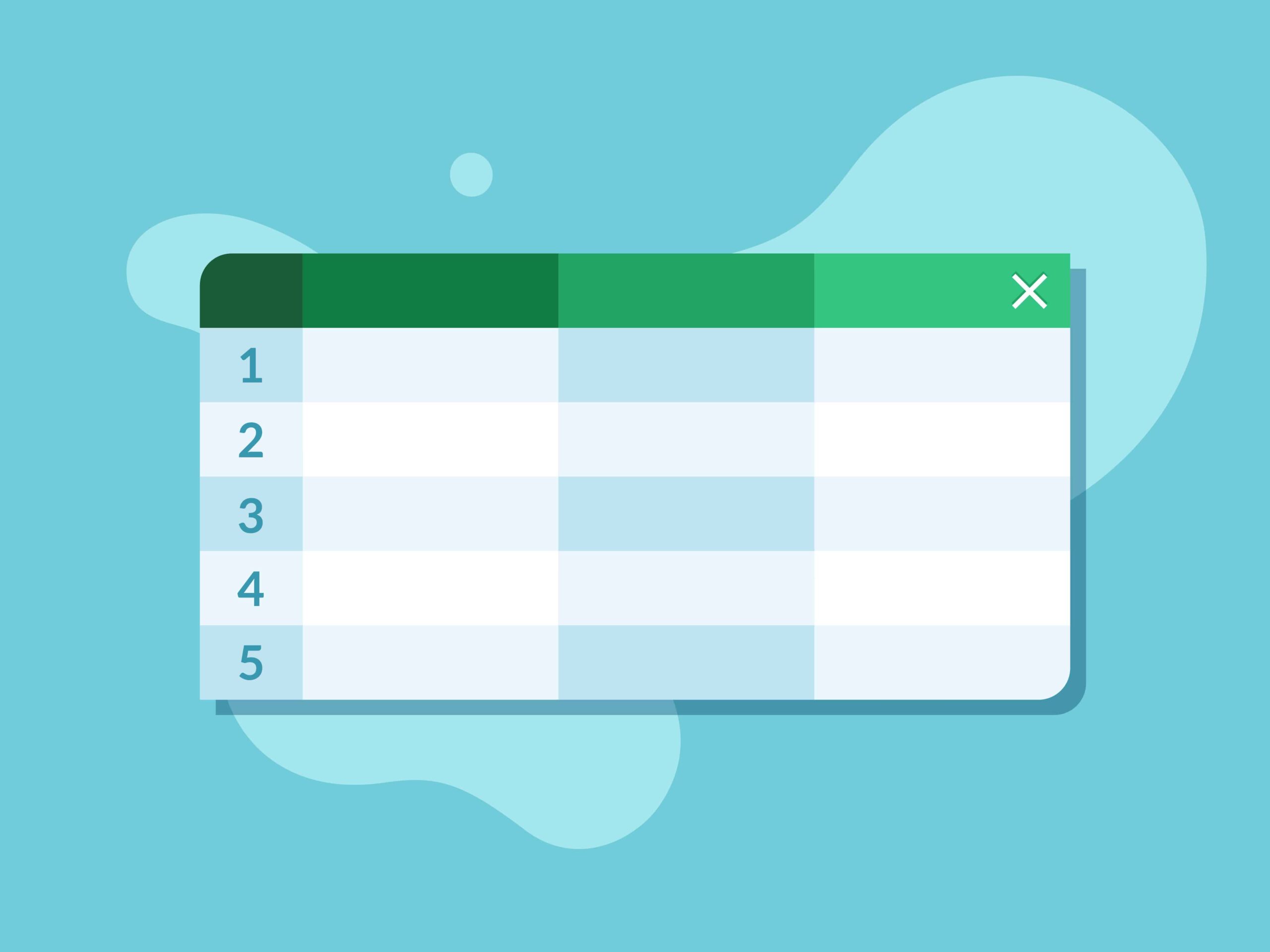You need a content calendar if you produce and distribute content. That’s a no-brainer.
Yet, content calendars notoriously slip into obscurity over time. Or they walk out the door when an employee leaves. Assuming they existed at all.
Without an active calendar, it’s hard to make the most of every asset you create.
A content calendar is many things:
- A single source of truth that keeps everyone on the same page
- A broader vantage point for planning and seizing opportunities
- A tracking mechanism to monitor content production
“A content calendar gives you structure and a tactical game plan for executing on your content strategy,” said Lindsay Young, President at 3 Aspens Media. “It ensures consistent output and provides visibility to your team on what’s coming, keeping everyone on the same page.”
As a B2B content outsourcing firm, we lean on content calendars as that single source of truth and well of opportunity so we can work more seamlessly with clients and their content. We’ve seen the value of content calendars first-hand and the struggles that result when you try to navigate without one. Here, we’ll share what makes calendars a saving grace for businesses and provide tips for starting your own.
The Importance of a Content Calendar in B2B
The root of “business” is busy, right? You and your team have a lot of irons in the fire, especially if you’re running a small business. But trust us, developing a content calendar will save you headaches down the line and help you create more effective content.

Here are a few benefits of having a B2B content calendar.
Organization and Alignment
“The time you spend planning and organizing is time well spent,” said Teri Vannoy, Content Strategist at 3 Aspens Media. “The content calendar allows you to be proactive and organized.”
With a content calendar in place, you can:
- Think about and agree on structured content to achieve your goals
- Identify how that content aligns with the overall content strategy
- Schedule interviews and time to research for upcoming pieces
- See progress as you move along
Long-Term Planning and Mindful Shifts
The longer-term view of a calendar means you can plan, track and re-organize wisely. You can plan out content relevant to:
- Trade shows
- Software updates and releases
- Product releases
- New service offerings
- Industry-relevant themes that repeat, such as seasonality in HVAC
Then, you can consult the calendar and make mindful shifts to your priorities as relevant topics and issues arise. This allows for greater control, so priority items don’t get moved or lost in favor of a lower-priority idea or asset.
Erin Myers, Client Success Manager at 3 Aspens Media, has the standard expectations outlined for the next three months – with wiggle room to accommodate changes. “I have categories for blog posts, social, etc.,” Erin says. “I’ll fill them in as we plan, typically three months out. If clients have new things come up, we’ll go through the calendar and push things out.”

Collaboration and Accountability
A calendar keeps everyone on the same page, allowing them to collaborate and plan using the same playbook. It also helps you align expectations with stakeholders.
It’s best to plan at least one month in advance around topic, format and distribution. If you’re constantly requesting last-minute deliverables, that affects writers, designers, producers and publishers – and it’s chaotic.
In the chaos, content can get lost. You might produce something and discover –
months later – it was never published. Or that it got stuck with a stakeholder for approval and forgotten. A content calendar keeps you from wasting resources because of such disorganization.
How to Create a B2B Content Calendar
Creating your calendar is as simple as opening a spreadsheet and plugging in a few critical categories. It doesn’t have to be complex to start. Then, you’ll use your content strategy to inform topics and other details.
Pick Your Tool
You don’t need special software to manage a simple content calendar. We tend to use Excel or Google Sheets, as these are easy to share with our clients and easily understood by most people. We use these in tandem with project management tools, including Trello and Asana, to manage the specific deliverables and move them through the pipeline.
 For example, if we have a blog slotted for October on our calendar, we create a Trello card for that blog under the category “October,” add details and resources to the card description, assign responsibilities and set due dates.
For example, if we have a blog slotted for October on our calendar, we create a Trello card for that blog under the category “October,” add details and resources to the card description, assign responsibilities and set due dates.
Intelligent content calendar tools might be appealing if you’re managing a more complex strategy with fewer resources.
Allison Murray, Client Success Manager at 3 Aspens Media, has experience using HubSpot to manage a content calendar. “It helps visually,” Allison said. “I have more control: These are the social media posts going out, how they relate to certain blog posts. I’m able to correlate it and keep track of which blog we’re promoting, and how that tracks to SEO.”
Regardless of the tool you use, what’s most critical is that it’s accessible to everyone, easily editable and user-friendly.
Define Your Categories
A barebones content calendar only needs columns for the topic, content type (blog, whitepaper, etc.) and notes. However, the more you work with your calendar and strategy, the more targeted and intentional you will get. You’re likely to add additional categories, such as:
- Theme and/or category
- Status
- Target publication
- Target audience persona
- Funnel position
- Campaign
- Relevant keywords for SEO
- Date to publish
- Links to published articles
- Writer assigned
- Approvals needed
- Public relations components
- Related assets
- Social
Similarly, though you may start with one spreadsheet, your content calendar may expand to have multiple tabs for referencing trends, SEO research, specific platforms like social media, brainstorming and more.

Consult Your Content Strategy
Once your content calendar framework is set, it’s time to use your content strategy and isnights from your team to populate it. Your strategy will have outlined target personas, industries, potential topics and campaigns. It helps you plan content that aligns with marketing and business goals. The calendar is how you execute on that strategy.
Are you thinking, “Wait! I don’t have a content strategy!” We have a resource for that too >>
Start Planning and Scheduling
From there, all that’s left is to start scheduling! Consider these six questions for each piece of content, using your content strategy as your guide:
- What is your goal? What message do you want to portray to existing and potential customers? Be sure it aligns with your overall business strategy.
- Who is going to write? Do you have a team dedicated to building content? What do their schedules look like? If they have a lot on their plates, don’t plan to post something every day. Be realistic, or it will be too easy to fall behind.
- What are customers asking about or searching for? One of the best sources of ideas for blog posts is your customers.
- What images might you include? It’s helpful to include a note in your content schedule about the images you want published with your content.
- Are there assets related to the content? For instance, is it connected to a specific event or overall campaign with supplemental content, such as whitepapers and videos?
- How will you promote it? When building out your schedule, consider how each asset will be promoted. Will it be pushed out an email newsletter and social media? If so, include any tasks associated with promoting the asset in your schedule.
Our Practical B2B Content Calendar Tips
No effort is too small. It’s okay to start simple. A basic content calendar can do a lot to move your program forward.
Don’t leave the calendar unowned. Content is important enough to make sure someone “has the ball.” Don’t let the calendar go dormant; don’t let it be a toss-up of who has it.
Roll with delays and deviations. “There are always deviations to the calendar,” said Nina Baker, Client Success manager at 3 Aspens Media. “It can’t be helped when you need information, interviews are difficult to schedule, more research is needed or you need to change topics.”

Use the calendar to multiply value. Seeing the bird’s eye view of your content plan allows you to find opportunities to stretch your efforts. An in-depth blog series could also be used for an email campaign, social posts, printable assets and more.
Keep your ear to the ground. Stay flexible to keep your content fresh and relevant. Nina suggests communicating with sales reps to stay on target – even as it moves. “They have their finger on the pulse of the industry,” Nina said. “They can suggest topics that are of concern to prospects and customers, and that’s what you want to address with your deliverables.”
Get our simple content calendar template to kick-start your calendar creation:
GET THE CONTENT CALENDAR TEMPLATE:
If you’d like to learn more about how we work with clients to develop content calendars and execute content strategy, get in touch at [email protected].



